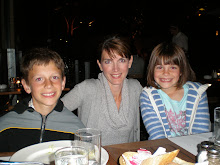


Last year I saw the movie “Caramel.” It’s a Lebanese film made in 2007. It’s about four women working in a beauty salon in Beirut. The women struggle with universal issues such as aging and the search for love. The movie put a human face to a city that has been in political turmoil.
I don’t know much about Beirut, other than what I’ve read in the book, “From Beirut to Jerusalem” by Thomas Friedman. It chronicles the tension between Arabs and the Israelis and the obstacles to achieving peace in the Middle East. Also, my friend, Rex, described Beirut to me. He worked there for a short time when it was known as “the Paris of the Middle East.” He portrayed it as a delightful place with little shoreline cafes, good restaurants and hotels. It was known for being a place where one could go for a swim in the Mediterranean in the morning and go skiing in the mountains in the afternoon. “What’s happened to it since is a complete travesty!” he said.
For our Lebanese meal I made lamb kebab pita sandwiches with yogurt sauce, green onions, mint and hearts of romaine. It was delicious and it reminded me of the scrumptious street food of the Middle East. The kids loved it too.
Lamb Kebob Pita Sandwiches with Yogurt sauce and Salad
For the lamb:
1 large yellow onion
Juice of 1 large lemon
2 TBSP extra-virgin olive oil, plus extra for brushing
Freshly ground pepper
2 lbs boneless lean lamb from loin or leg, cut into 1 inch cubes
For yogurt sauce:
1 1/2 cups Greek yogurt or other plain yogurt
1/2 English cucumber, peeled and coarsely shredded
Sea salt and freshly ground pepper
For the salad:
6 green onions, white part only, thinly sliced
1/4 cup fresh mint leave, coarsely shredded
4 large pita breads
















